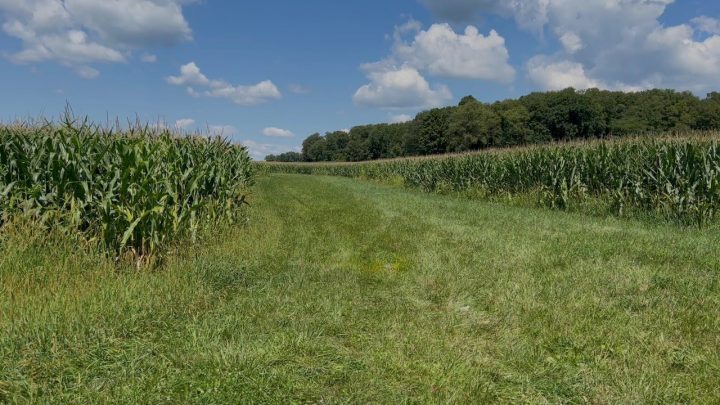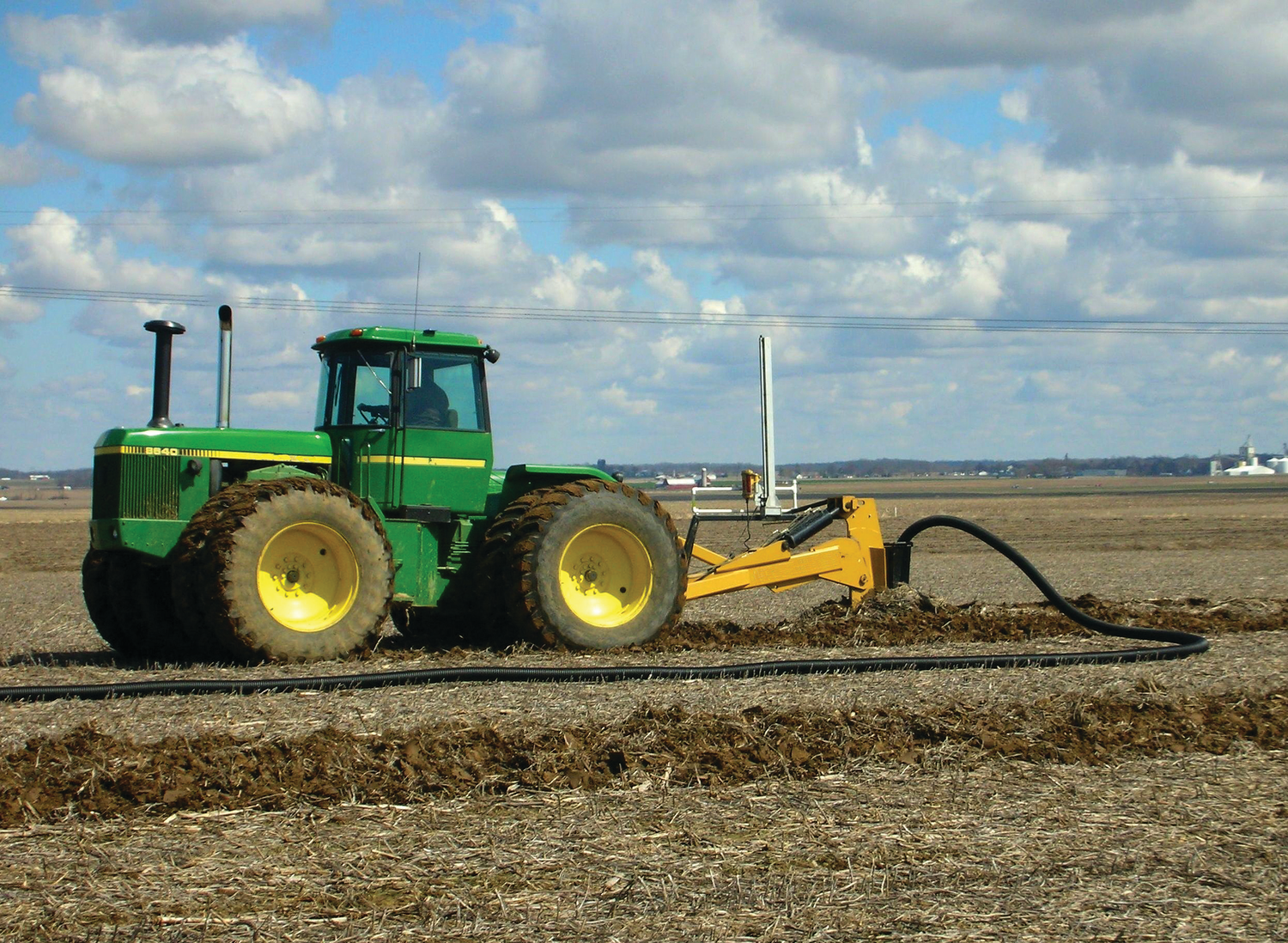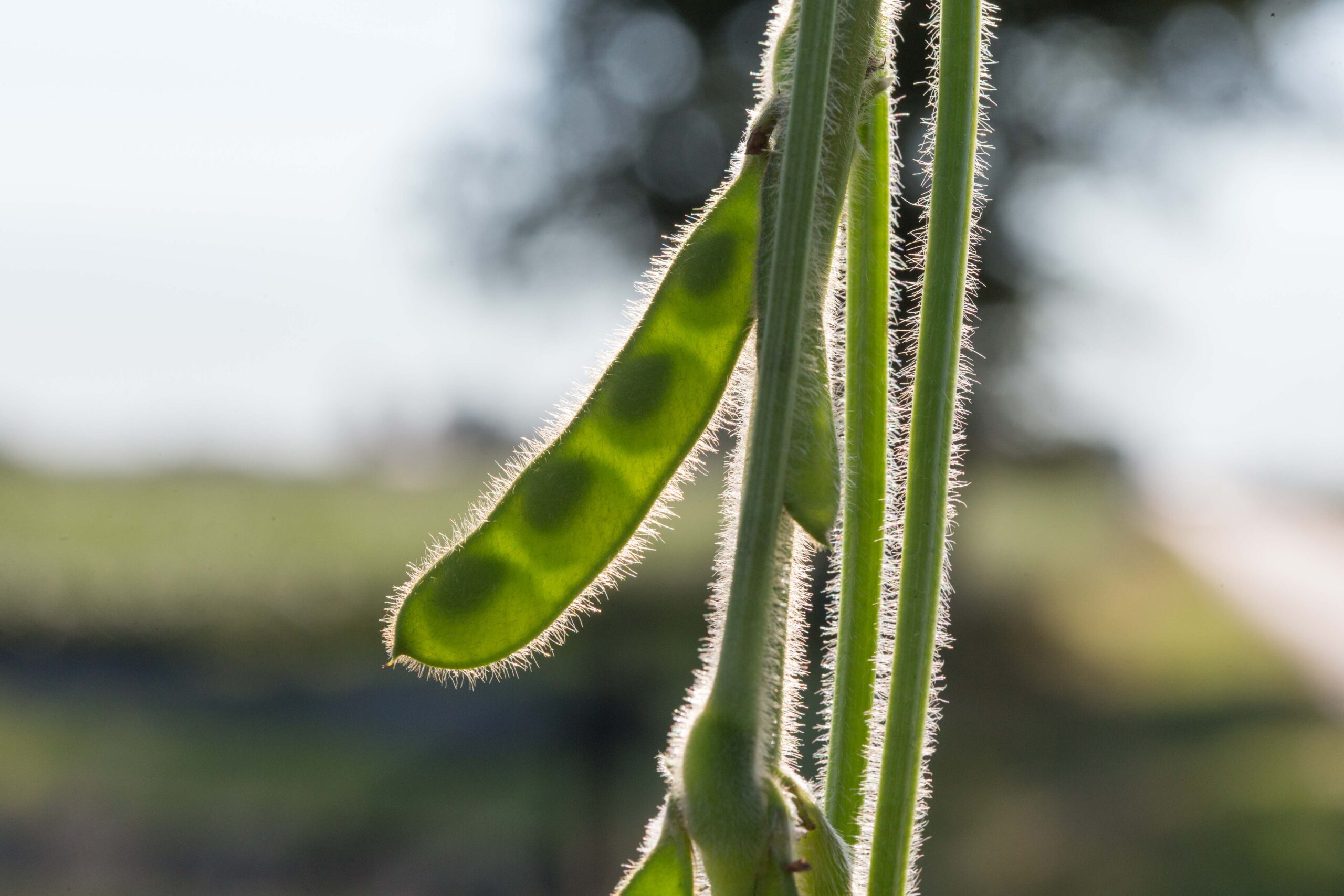Two-Stage Ditch and Sod Waterways Pulling a Farm Together

By Dusty Sonnenberg, CCA, Ohio Field Leader, a project of the Ohio Soybean Council and soybean checkoff
For Les and Jerry Seiler, soil conservation became a necessity to keep a farm in production. Les Seiler farms with his brother Jerry and son Nathan in Fulton County near Fayette, Ohio. The farm consists of corn, soybeans, wheat, barley and alfalfa. The Seilers plant cover crops and use no-till and conservation tillage. “Fulton County has around 62 different soil types. We farm about 32 of those. Some of our fields may have 4 to 5 soil types in the same field,” said Seiler. “Using conservation practices allows us to mitigate some of the variability. We now use cover crops to try to keep something living in the soil all year around.”
While most of the acres the Seilers farm are very typical of the flat Northwest Ohio landscape, one farm in particular had a significant amount of slope to it. “We would have to come in and farm around a hillside that was too steep to farm because it had eroded,” said Seiler. “This farm would have gullies and washouts from soil erosion every spring that we were constantly needing to come in and push back in.”
The Seilers were constantly fighting erosion and losing ground, quite literally. “We started looking at erosion issues in 1986 and realized we needed to do something different to prevent the loss of our soils. We began to install waterways on the farm, and that led to the construction of a two-stage ditch that ran through the farm,” said Seiler. “On this farm we installed a 1,400-foot-long waterway. Over that distance, it has 14 feet of fall. The water moves very quickly and before it was a waterway, it caused washouts and gullies that we were constantly needing to fill in. The rain and erosion were taking the soils off the farm. The ditch that runs through the farm is called Iron Creed and is 660 feet long. It has 11 foot of fall over that distance. The water would move quickly through a winding channel and that was constantly eroding the banks and we found ourselves constantly placing concrete along the banks to slow the erosion, but it would just push the problems further down the ditch every year.”
A two-stage ditch
In today’s world, everyone would like to have a straight ditch run through their farm. Often that is not the case. “The ditch on this farm has a very winding channel. Ideally in the construction of a two-stage ditch, you do not disturb the original channel. That can get into a lot more engineering and design work. For our project we did not touch the original ditch channel,” said Seiler. “For construction of the two-stage ditch, we went up two feet from the channel and constructed a 35-foot-wide bench. It is a total of 30 foot from one side of the banks to the other with the channel winding through it. From there we went up to the top of the bank and reformed the banks with a 1 to 2.5 foot slope. The dirt that was removed during the construction of the two-stage ditch was able to be placed in low areas, and on the hillside that we were having to farm around, and now can farm that hillside. A two-stage ditch can take a lot of ground, but we probably gained back as many acres as we lost in the construction of the ditch.”
When it comes to improving water quality, the two-stage ditch has multiple functions. “As the water moves through the two-stage ditch, it slows and that causes the sediment to settle on the benches. The increased vegetation on the banks also takes out some of the nutrients,” said Seiler. “When the water leaves the farm it is moving much slower and has less sediment and nutrients than when it entered the farm.”



